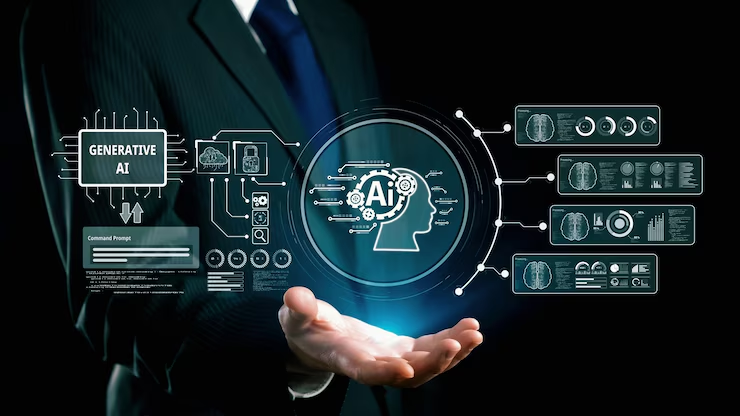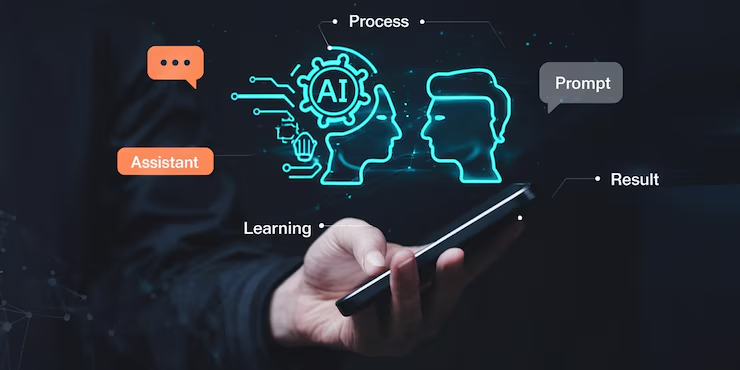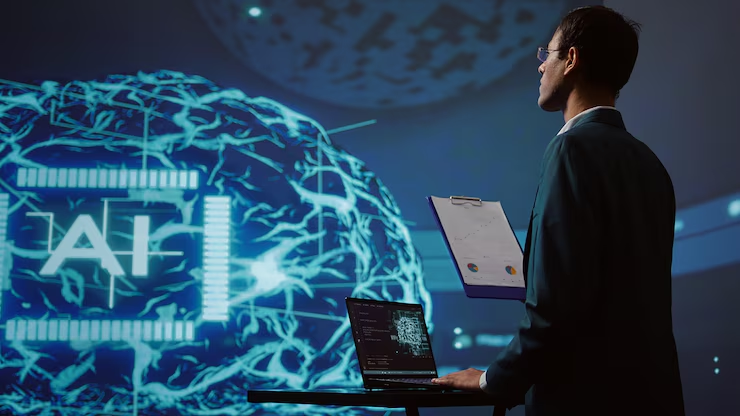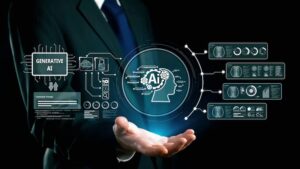Case Study > Enhancing Accessibility Through AI and Machine Learning
Technology & Software
Enhancing Accessibility Through AI and Machine Learning

Focus Areas
AI Accessibility Solutions
ML Inclusive User Experiences
Real-Time Personalization

Business Problem
A global digital media and education company was committed to improving accessibility for users with visual, auditory, and cognitive impairments. However, its existing platforms lacked scalable assistive features and suffered from inconsistent user experiences across devices. Regulatory compliance with WCAG and ADA standards was a growing concern, especially as digital content expanded. Leadership aimed to embed AI and ML into the core product architecture to enable real-time personalization, assistive automation, and inclusive design—at scale.
Key challenges:
Inaccessible Content: Static UI components and non-descriptive media hindered usability for screen readers and assistive tools.
Manual Remediation: Accessibility audits and fixes were reactive, time-consuming, and inconsistent.
Low Personalization: The platform lacked real-time adaptation to diverse user needs and preferences.
Compliance Risk: The firm faced growing exposure to ADA and WCAG violations across global markets.
Lack of Analytics: No visibility into how users with disabilities engaged with content or navigated challenges.
The Approach
Curate partnered with the organization to design and implement AI- and ML-driven accessibility enhancements. The solution aimed to automate compliance, personalize user experiences, and embed inclusive design practices into the software development lifecycle.
Key components of the solution:
Discovery and Requirements Gathering:
Accessibility Audit: Evaluated web and mobile platforms against WCAG 2.1 AA standards.
User Research: Engaged users with disabilities to uncover pain points, usage patterns, and unmet needs.
Tech Stack Review: Assessed existing capabilities in computer vision, NLP, and UI rendering engines.
Stakeholder Workshops: Brought together product, design, legal, and engineering leaders to define a roadmap.
AI-Driven Accessibility Layer:
Developed a real-time accessibility engine using computer vision (CV) and natural language processing (NLP).
Enabled on-the-fly image captioning, video transcription, and dynamic UI adjustments.
Integrated with React and Flutter apps to auto-generate ARIA tags, landmarks, and focus states.
Machine Learning for Personalization:
Trained ML models on anonymized behavioral data to predict and adapt content formats (e.g., text-to-speech, font scaling, contrast adjustment).
Created customizable user profiles that dynamically adjusted interface components and navigation flows.
Used reinforcement learning to refine assistive recommendations based on interaction outcomes.
Automated Accessibility Testing and CI/CD Integration:
Deployed tools like axe-core and Google Lighthouse into the CI pipeline for continuous WCAG compliance validation.
Built a regression testing suite to detect accessibility breaks on UI changes.
Delivered real-time dashboards for compliance monitoring and release gating.
Inclusive Design Framework:
Created an internal accessibility design system with reusable components and guidelines.
Embedded accessibility reviews into pull requests and sprint planning.
Conducted training for designers and developers on empathetic UX and inclusive design principles.
Business Outcomes
Increased User Inclusivity
Users with visual, auditory, and cognitive impairments experienced improved navigation, content engagement, and satisfaction.
Automated and Scalable Compliance
AI and ML reduced manual testing effort and ensured consistent compliance across updates and platforms.
Real-Time Adaptation
The platform could now respond in real-time to individual user needs, improving retention and usability.
Brand Reputation and Market Expansion
Demonstrated leadership in digital accessibility, enabling entry into education, government, and enterprise markets with accessibility mandates.
Sample KPIs
Here’s a quick summary of the kinds of KPI’s and goals teams were working towards**:
| Metric | Before | After | Improvement |
|---|---|---|---|
| Accessibility defects/release | 18 | 2 | 89% reduction |
| Time to resolve accessibility bugs | 6 days | 2 hours | 96% faster |
| WCAG 2.1 compliance score | 72% | 98% | 26% improvement |
| Visually impaired user engagement | Baseline | 48% | Increase |
| Accessible content coverage | 40% | 100% | Complete coverage |
**Disclaimer: The set of KPI’s are for illustration only and do not reference any specific client data or actual results – they have been modified and anonymized to protect confidentiality and avoid disclosing client data.
Customer Value
Compliance by Design
Embedded accessibility into SDLC and product lifecycle.
Scalable Solution
Machine learning models enabled consistent, adaptive accessibility across platforms and user contexts.
Sample Skills of Resources
AI/ML Engineers: Built and trained accessibility models using CV and NLP.
Front-End Developers: Integrated adaptive UI components and dynamic rendering logic.
Accessibility Specialists: Conducted audits, testing, and remediation aligned to WCAG/ADA.
UX Designers: Crafted inclusive experiences and contributed to design system updates.
DevOps Engineers: Automated testing and integrated compliance gates into CI/CD pipelines.
Tools & Technologies
AI/ML: TensorFlow, PyTorch, spaCy, OpenCV
Accessibility Tools: axe-core, Google Lighthouse, WAVE, VoiceOver, NVDA
Front-End Frameworks: React, Flutter, ARIA standards
CI/CD & Testing: GitHub Actions, Jenkins, Cypress, Selenium
Monitoring & Analytics: GA4 Accessibility Events, Custom Dashboards, Segment

Conclusion
By integrating AI and machine learning into its accessibility strategy, the organization fundamentally transformed its digital experience into an inclusive, intelligent, and adaptive platform. Curate’s approach blended innovation with compliance, empowering the firm to serve all users equally—and to do so at scale, with precision and empathy.
All Case Studies
View recent studies below or our entire library of work

Strengthening Cybersecurity and Data Protection for a Technology Company
Technology & Software Strengthening Cybersecurity and Data Protection for a Technology Company Focus Areas Cloud Security Architecture Data Protection & Encryption Identity & Access Management

Building a Real-Time Data Pipeline for Enhanced Analytics
Technology & Software Building a Real-Time Data Pipeline for Enhanced Analytics Focus Areas Real-Time Data Engineering Scalable Architecture Analytics and Observability Business Problem A fast-growing

Accelerating Analytics at Scale with a Data Product Playbook
Financial Case Study Accelerating Analytics at Scale with a Data Product Playbook We partnered with a leading financial institution to design and roll out a

Enhancing Accessibility Through AI and Machine Learning
Technology & Software Enhancing Accessibility Through AI and Machine Learning Focus Areas AI Accessibility Solutions ML Inclusive User Experiences Real-Time Personalization Business Problem A global